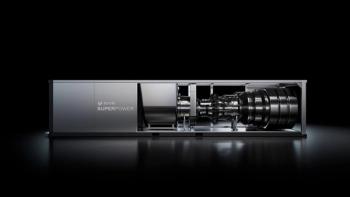
Rolls-Royce Successfully Conducts F130, Rapid Twin Pod Testing
Test data from NASA’s Stennis Space Center informs the production configuration of the F130 engine’s Critical Design Review (CDR), scheduled for fall 2024.
Rolls-Royce began testing the F130 engine in a dual-pod configuration for the U.S. Air Force B-52J Stratofortress. Testing at NASA Stennis helped Rolls-Royce meet initial testing goals and engine-delivery pace set by the Air Force. Test data informs the production configuration for the F130 engine’s CDR, scheduled for fall 2024.
“We are thrilled to take the next step forward in the program with F130 sea-level testing in Indianapolis,” said Candice Bineyard, Director of Early Life Cycle & Naval Programs Defense, Rolls-Royce. “To date, our testing program has confirmed our predictions and allowed us to stay on track to deliver this fixed price contract for the Air Force. The F130 engine has demonstrated incredible dispatch reliability, which will translate to lower lifecycle costs for the B-52, as well as improved fuel-efficiency. As we kick off testing in Test Cell 114, we want to thank our partners at Boeing and the Air Force as we move forward in the program together.”
The tests produced performance data, validating Rolls-Royce’s predictions on crosswind conditions and de-risking F130 integration on the B-52J. The engines will extend B-52 aircraft life by 30 years, as their durability enables it to remain on wing for the remainder of aircraft life. Sea-level testing, conducted in the refurbished Test Cell 114, will run the F130’s initial software release. Rolls-Royce also successfully performed rapid twin pod tests.
Test Cell 114 is a new facility that supports development testing and production acceptance. Rolls-Royce refurbished the facility as part of a $1 billion investment to modernize Indianapolis facilities, delivering advanced manufacturing to the Air Force and additional customers. F130 engines will be manufactured, assembled, and tested in Indianapolis.
Stennis Space Center
In late July 2024,
The testing will demonstrate the technology integration needed for 100% hydrogen fuel operation on a modified Rolls-Royce Pearl 15 aviation engine. Tata Consultancy Services will provide engineering expertise for the project. In addition to hydrogen testing, Rolls-Royce will focus on the enhancement of gas turbine engines, integrating sustainable aviation fuels, and increasing electrification.
Rolls-Royce Aviation News
Also, in July 2024,
The Trent XWB, Rolls-Royce’s large aero engine, can power short- and long-haul flights for both passenger and freighter operations. Leveraging a 15% fuel-consumption advantage over first-generation Trent engines, the Trent XWB-84 flies further with less fuel and features reduced noise levels. It’s currently certified to operate with 50% sustainable aviation fuel (SAF) and capable of 100% SAF usage in the future.
Newsletter
Power your knowledge with the latest in turbine technology, engineering advances, and energy solutions—subscribe to Turbomachinery International today.





